Let yourself be spirited to some of Britain’s most beautiful destinations aboard a vintage train
Modern trains might be convenient, but where’s their charm? They neither send out billows of smoke, nor whistle as they pull into stations. Meanwhile, Agatha Christie – or her characters – wouldn’t be seen dead on the carriages, as clean and functional as they might be. Where’s the crystal in the buffet car? Where is the buffet car?
Fortunately, several hundred steam locomotives and, even better, their carriages, still run in Britain – and on historic routes, too. Many are from the late 19th and early 20th centuries. Most came out of regular service in the Sixties, and are now run by volunteers. Here, we visit some of the best of Britain’s heritage railway lines.
Belmond British Pullman
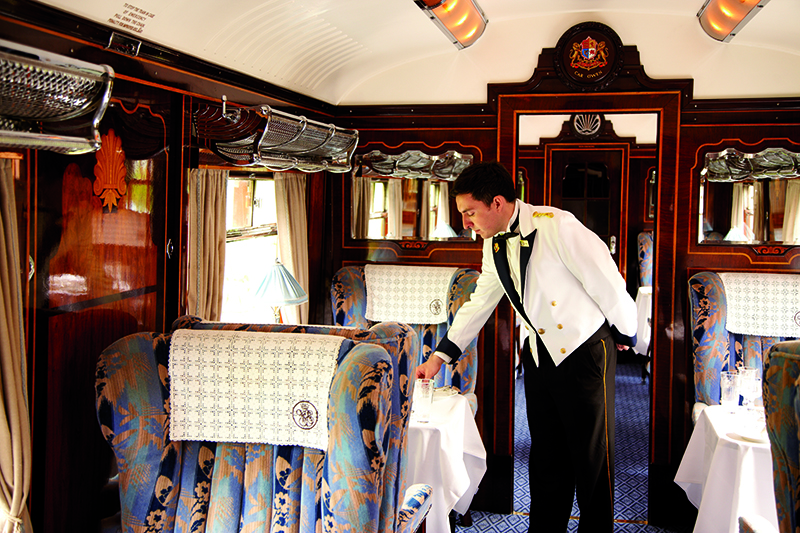
Looking for marquetry decorated with leaping antelope, deep-pile carpet or cut-glass tumblers? You’ve come to the right place. The 11 carriages of Belmond British Pullman – sister train to the Venice Simplon-Orient-Express – were once part of the Brighton Belle and the Golden Arrow, celebrity trains of their time, and display Twenties and Thirties glamour. They even have names, including “Audrey”, which carried Her late Majesty The Queen, and appeared in the Agatha Christie adaptation Murder on the Orient Express.
Destinations include Bath, York, Canterbury, Blenheim Palace and a new route to Stratford- upon-Avon. Pop-up dinners are hosted by Michelin star chefs such as Michel Roux, Jr and Raymond Blanc, while murder mystery lunches give you the chance to recreate those Agatha Christie moments.
West Somerset Railway
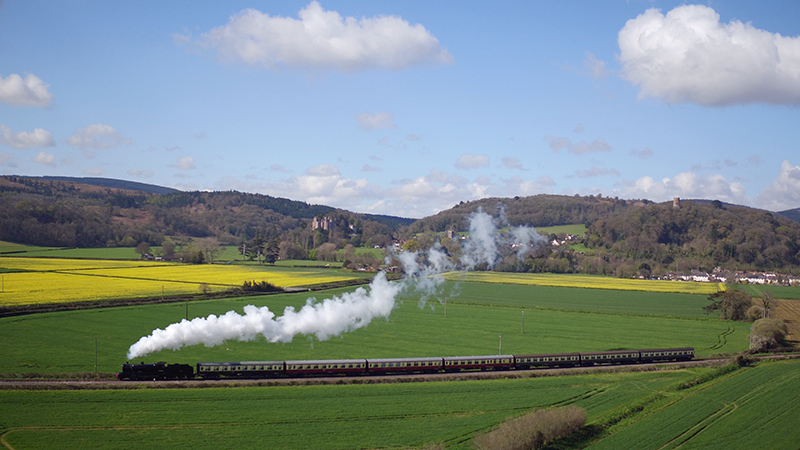
At 22.75 miles (36.61km), The West Somerset Railway is the longest heritage railway in England. And it has vintage appeal, too: parts of the line opened in 1862. Window seats offer views of the Quantock Hills, the sea and myriad villages. Explore the countryside from Williton Station, near the Coleridge Way – a 36-mile trail through landscape that inspired the 19th-century Romantic poet. Or from Crowcombe Heath eld, where you can take a one-and-a-half-mile circular walk, crossing a couple of railway bridges (look out for the aming leaves of the beech trees in autumn). Bring a bike to recreate Beatle Ringo Starr’s appearance in A Hard Day’s Night, where he cycles down Crowcombe platform. Or a bucket and spade, if you prefer the seasidey lure of Minehead, at the end of the line.
North Yorkshire Moors Railway
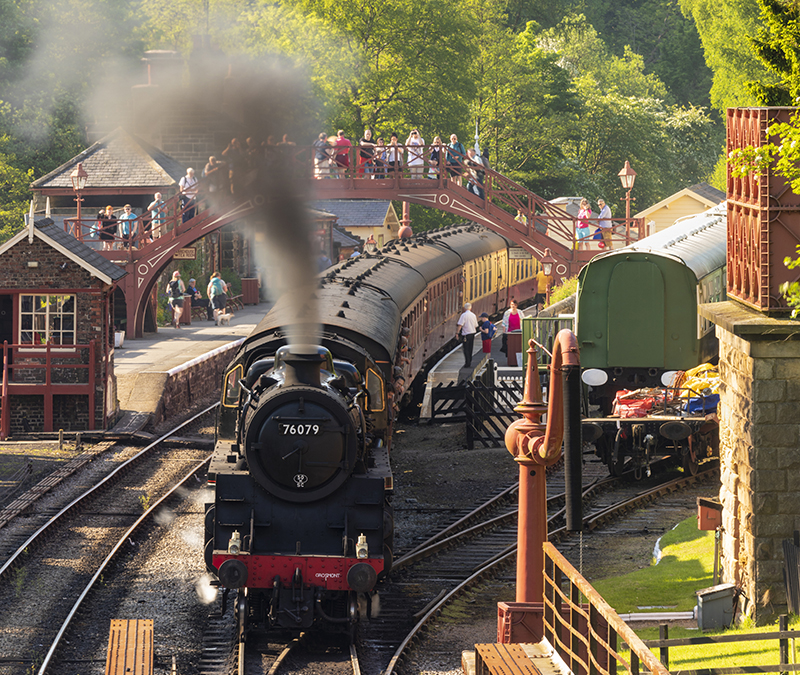
You don’t get more historic than this route, if only because it was planned, in 1831, by George Stephenson, the Father of Railways. Today, the 18-mile (29km) heritage line, from Pickering to Grosmont, carries more passengers than any other in Britain. The heathery moors, marked by the quaintest of stations, are the draw. Both Pickering and Goathland stations, built in Victorian times, have been restored to their Twenties and Thirties glory. (The former appeared in Brideshead Revisited.) The War-Time Weekend in October will maximise the historical charm: expect actors in period dress to roam the area. Christmas will be even more spirited, with elves and mince pies. Even Santa thinks this railway is worth a visit, from Lapland, at his busiest time of year.
Bluebell Railway
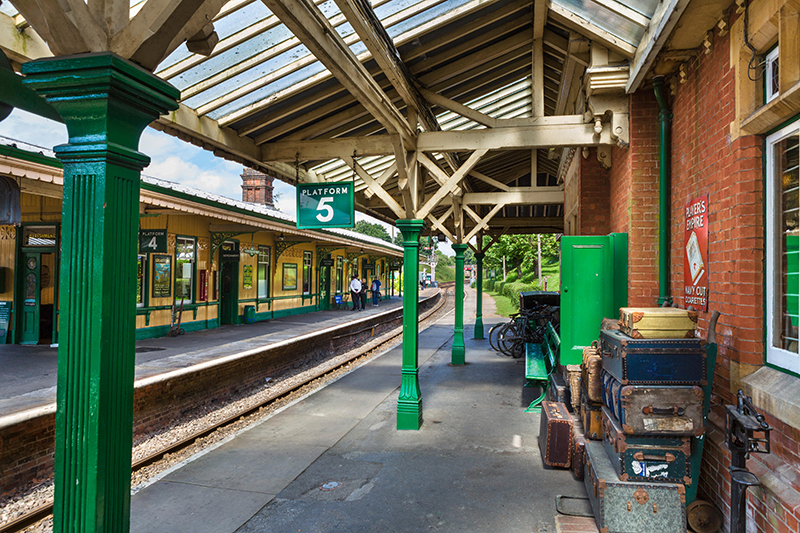
The Bluebell Railway – the name of the line rather than a train – started in the Sixties, but its locomotives and carriages are considerably older. Most of the latter are pre-Second World War, and take it in turns to chug along the 11-mile (17.7km) route, largely across West Sussex. Trips are relaxed, starting or ending at Sheffield Park station, its Victorian charm restored. For afternoon tea on a Saturday, take the “Wealden Rambler” – the Victoria sponge could have been homemade. For a heartier meal, join the “Real Ale” train, offering a sausage-and-mash supper at a pub. Prefer to make your own trip? Buy an All Day Rover ticket. Look out for Horsted Keynes, on the way. The Victorian-era station has been restored to its 1920s days and appeared in Downton Abbey.
The Isle of Man Steam Railway
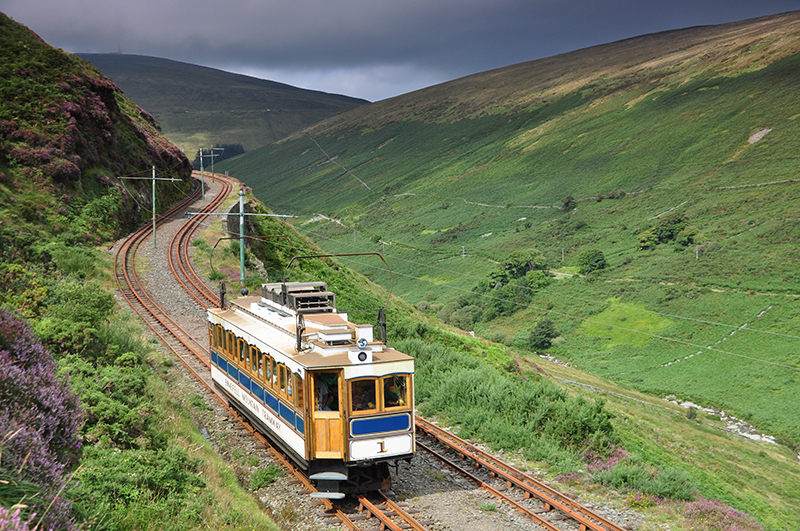
This railway is the longest narrow gauge steam line in the UK that still uses its original locomotives and carriages. Want figures? It’s 3ft (914mm) wide and 15.3 miles (24.6km) long. Founded in 1870, it is, in fact, the remainder of a much longer network of more than 46 miles (74km). Today, trains chug away between Douglas, the capital of the British crown dependency between England and Ireland, and the best of the island’s sites in the south, including Port Erin, a Victorian seaside resort. The train is the most atmospheric way to reach the remains of Rushen Abbey, an ancient monastery, and Castle Rushen, a medieval castle. The highlight of the train itself is the restored dining car, built in 1905, with its maroon velvet chairs, plush carpet and starchy white table clothes.
The Jacobite

The Jacobite gets its name from the 17th-century political movement which fought for James VII of Scotland (James II of England) to be restored to the English and Scottish thrones after the Glorious Rebellion. The Jacobite hasn’t been going for that long, although parts of the line do date back to 1901. The 41-mile route (66km), up steep gradients and tight turns through the Scottish Highlands, includes lots of highests and deepests and shortests – from Fort William (near Britain’s highest mountain, Ben Nevis) to Loch Morar (Britain’s deepest freshwater loch) to Arisaig (Britain’s most most westerly mainland railway station, where, on a clear day, you can see some of the Scottish islands). Could the line also be one of the most famous – at least by sight? It’s the one in the Harry Potter films. The Hogwarts Express sits at the Warner Brothers’ Studio Tour in London, but you still get to experience part of Harry’s journey over the 21-arched Glenfinnan Viaduct. And you won’t have to fight a dragon at the other side.

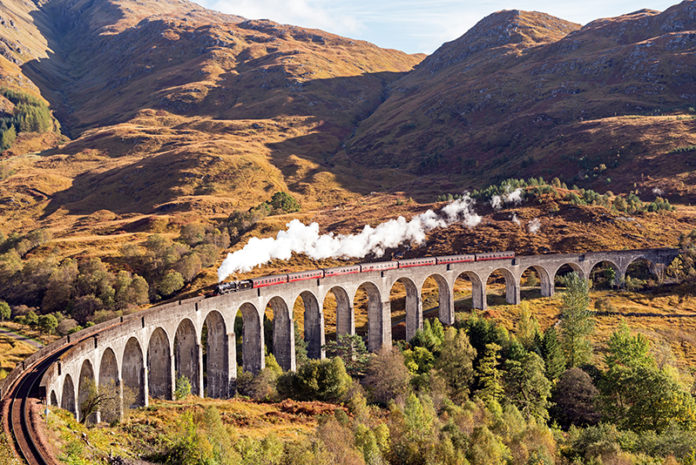




 © 2024
© 2024